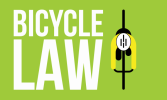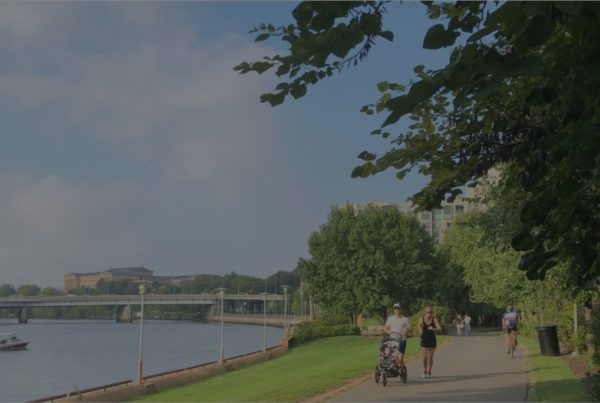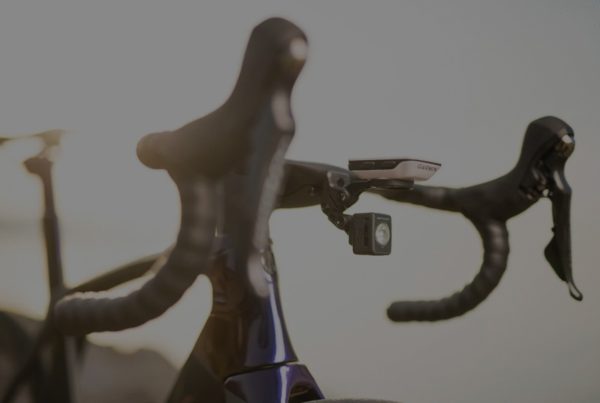Dear Readers,
I’m going to take the unusual step of starting with the subject with which I usually close my columns. I would like to invite those of you can attend to visit with me at my next speaking appearance:
Saturday, September 20, 2008
Nashville, Tennessee
The Tennessee Bicycle Racing Association’s annual awards ceremony, the 2008 TBRA Celebration of Champions.
Now while a lot of you find lengthy discussions about esoteric legal issues as exciting as I do, some of you don’t. Rest assured, I will be there to talk about more than just the law. I’m really looking forward to the evening and I hope to meet as many of you as possible.
If you would like me to appear to speak at your event or shop, or to your club or group, please drop me a line at bookbob2speak@gmail.com (and if you would like to contact me with a question or comment not related to my speaking tour, please drop me a line at mionskelaw@hotmail.com). I’m looking forward to meeting as many of my readers as possible this year.
In a previous Legally Speaking column, Bikes vs. Cars, I recounted some of this summer’s more egregious road rage incidents between motorists and cyclists, all of which happened in rapid-fire succession over a period of several weeks. As I noted in conclusion, although these stories may have seemed like “a new kind of road rage,” as Newsweek put it, for seasoned cyclists, the stories were more an indication that the daily violence cyclists encounter had finally managed to capture the attention of the public-at-large.
But more importantly, I observed that the larger questions remained unasked, and unanswered in the media: Why are cyclists the daily targets of road violence, and what can cyclists do to change that reality? In the last column (see “Summer of rage”), we looked for some answers as to why these road rage incidents occurred; this week, we’ll continue with a discussion of how anger becomes road rage, and strategies for changing the cycling environment for the better. To start things off, let’s refresh our memories with a recap of these road rage incidents:
• July 4: Brentwood, California motorist Dr. Christopher Thompson honks at cyclists Ron Peterson and Christian Stoehr, who are riding two abreast. The two cyclists single up. Thomspon buzzes them, honks again, and delivers a profanity-laced tirade about riding two-abreast. When Peterson responds, Thomspon veers in front of the two cyclists and brakes hard. Peterson goes through the rear window, Stoehr goes down. Thompson is arrested on suspicion of assault with a deadly weapon.
• July 6: Portland, Oregon cyclist Steven McAtee cuts off cyclist and bike mechanic Colin Yates, who is driving his car. McAtee then runs a red light. Yates catches up, and tells McAtee that he is giving cyclists a bad name with his erratic riding. Yates responds by smashing his bike into Yates’ car, and when Yates emerges, smashing his bike into Yates. McAtee is arrested and charged with third-degree assault, criminal mischief, disorderly conduct, and driving under the influence of intoxicants
• July 13: Portland, Oregon cyclist Jason Rehnberg is buzzed by motorist James Millican. Rehnberg yells “Slow down, gashole!” Millican responds by running down Rehnberg, who saves himself by leaping onto Millican’s hood. Cell phone footage of Millican careening down the street with Rehnberg still clinging to his hood makes the national news. Millican is later arrested and charged with kidnapping, second-degree attempted assault, driving under the influence of intoxicants, third-degree criminal mischief and reckless driving
• July 15: Portland, Oregon cyclist and messenger Adam Leckie cuts off a car carrying cyclist and bike shop employee Patrick Schrepping. Schrepping yells at Leckie, and then, as a final insult, Schrepping yells at Leckie for not wearing a helmet. Leckie follows Schrepping, and after he parks and goes inside a restaurant, Leckie keys Schrepping’s door. Schrepping runs outside, confronts Leckie, and a brawl erupts. Schrepping is arrested for assault, and Leckie is arrested for criminal mischief. Both men later apologize to each other, and charges are dropped
• July 25: Seattle Critical Massers surround a driver identified only as “Mark.” When they taunt him with suggestions that they might tip his car, he revs his engine and accidentally strikes two of the cyclists as he attempts to escape. When he stops a block later, enraged Critical Massers smash his windows and slash his tires. As he exits the car, he is struck in the head from behind with a u-lock. Two Critical Massers are charged with malicious mischief, and a third is sought for assault with a deadly weapon
• August 2: Kamas, Utah motorist Alexander Barto pulls up alongside cyclists Shane Dunleavey and Patrick Fasse and begins yelling about them being on the road. Dunleavy yells back that he has a right to be on the road. Enraged, Barto begins swerving into Dunleavy, who, in pushing off Barto’s truck, breaks off his mirror. Barto then runs Dunleavy down. Barto stops and exits his vehicle, and is subdued by Fasse and Dunleavy. Cyclists arriving on the scene report that Barto had just harassed them. Barto is arrested for investigation of aggravated assault.
In each of these incidents, anger exploded into violence. As we saw in Summer of Rage, driver anger can stem from any of fifteen identified sources, including driver restriction, regulation, lack of personal control, being put in danger, venting, and unpredictability. Note that anger—and the potential for road rage—is not limited to “drivers”; it can, and does, afflict everybody. However, anger is not in and of itself “road rage.” Rather, it’s when anger is vented in one of several specific ways that it becomes transformed into road rage.
That venting, according to Dr. Leon James, is a “choice” we make—the “trigger” by which our anger is transformed into road rage. In other words, on the road, everybody feels anger to varying extents, but the transformation of that anger into road rage begins with the choice to vent that anger. Typically, that venting is linked to “a strong desire to let the other person know how you feel.” Dr. James describes the indirect connection people make between “they provoked me” and “they deserve punishment” this way:
“They broke an important rule, which makes me feel bad. Therefore I want to punish them, which will make me feel better. Besides, it’s dangerous to let them get away with it. So I must help society and myself by teaching them a lesson they won’t forget.”
Now that might sound like an escalation of anger into violent road rage—and it often is. For example, think of Dr. Christopher Thompson teaching cyclists Ron Peterson and Christian Stoehr “a lesson” on the fourth of July. He was angry at feeling restricted by the cyclists in front of him, he chose to vent that anger, and when they responded, he decided to “teach them a lesson.” It was a classic case of what Dr. James calls “epic road rage.”
However, that desire to vent doesn’t necessarily lead to epic road rage. In fact, Dr. James identifies three different types of anti-social behavior that he classifies as road rage:
• Passive-Aggressive road rage: “A passive form of resistance that is expressed by ignoring others or refusing to respond appropriately. The intent of passive-aggressive road rage is to be obstructionist and oppositional.” An example of passive-aggressive road rage would be the driver who steadfastly observes the speed limit in the “fast lane,” despite the speeding drivers immediately behind who are signaling their desire to go faster by tailgating and flashing their lights. In the road rage incidents we witnessed this summer, the Critical Mass riders who refused to let the Seattle driver named “Mark” reverse direction and leave were exhibiting the passive-aggressive form of road rage behavior
• Verbal road rage: “The habit of constantly complaining about the traffic, keeping up a stream of mental or spoken attacks against all drivers, passengers, law enforcement officials, road workers, pedestrians, speed limits, and road signs. Undoubtedly the most common form of road rage, the purpose of verbal road rage is to denounce, ridicule, condemn, or castigate a rule, an engineer, or another driver.”
• Epic road rage: “The habit of fantasizing comic-book roles and extreme punitive measures against another driver, such as chasing, beating up, ramming, dragging, shooting, and killing, sometimes to the point of acting on it.” What most of us think of when we hear the words “road rage,” and thus, what was publicized as road rage in the incidents this summer.
Related to these three types of road rage, Dr. James identifies several types of road rage personality-types:
• Automotive vigilante: “This automotive bully aggresses against other motorists, chosen at random or for some specific reason, with a constant stream of verbal abuse, offensive gestures, and threatening maneuvers with the vehicle, sometimes going to [the] extreme of physical violence. When engaged in a dispute or when confronted by the law, the vigilante motorist will typically deny responsibility and counterattack, feigning victimhood to evade accountability, often with success.” This is the type of road rage many, perhaps most, cyclists have experienced, well before Newsweek discovered “a new type of road rage.” And as we saw this summer, the epic road rage incidents in Brentwood and Kamas both began with the motorist berating the cyclists for being on the road.
• Rushing maniac: “This dysfunctional driving style has two complementary elements. One is an extraordinary need to avoid slowing down. The other is the consequent anger against anyone who causes a slowdown.”
• Aggressive competitor: “Some drivers are so competitive that they need to be in the lead at all times, and feel a sense of loss and rising anxiety if another car passes them.” Now imagine that the “other car” is a bicycle…
• Scofflaw: “A notable feature of the culture of cynicism on the highways is the tendency we have to automatically disregard certain traffic laws, regulations, and signs. We act as if we’re entitled to break regulations whenever we feel like it. Some drivers are compulsively rebellious—for them a stop sign means reduce speed slightly, yield means grab the opportunity when you can, slow means reduce speed only if cops are around, yellow means hurry up and try to make it through, do not pass s for the really weak-hearted, and of course, 35 MPH means 55. We assume we are above the law.” As we can see on any road, this type of road-rager comes in both two-wheel and four-wheel models, and each is the first to point out that the other is a scofflaw.
In my talks, I sometimes discuss my own experience when confronted with road rage, or even just poor driving that threatens my safety. I’ve had two distinct types of reaction—what I used to do, and what I do now. By nature, I am the type who doesn’t take trouble from anyone; after all, it’s the same type A personality in our sport that enables us to succeed that also directs our response to aggression. What I used to do was react with what you could call a “tough guy response.” Unfortunately, as a response to anti-cyclist aggression, that doesn’t work, for two reasons. At the social level, it’s a selfish response, because even if you win, it only perpetuates the enmity towards cyclists, and worsens the cycling environment for everyone. And of course, at the personal level, a tough-guy response to an automotive vigilante has the potential to escalate into epic road rage, as we saw in Brentwood. In fact, according to Dr, James, even a measured response, as we saw in Kamas, can lead to epic road rage.
My goal is to stay in control of my emotions. When a bad driver cuts me off because he is not paying attention or checking his mirrors, I am able to stay cool. Let someone else ‘teach him a lesson’—whatever I have to tell myself to get through those first critical moments without reacting. In those cases where it seems the bad and dangerous driving was intentionally directed at me, it is very difficult for me to control my knee jerk response to retaliate immediately. It feels like I am ‘giving in’ or in some other way ‘losing’. In order to change my reaction I had to change my perspective. If I lose my temper and escalate an antagonistic situation, what I am really doing is losing control. I try to equate losing my temper with being defeated, with ‘losing’. For me this is often enough to deter my dark side from emerging.
This kind of reframing of our interpretation and reaction to another is exactly what Dr. James recommends as a way of escaping the road rage trap—a trap that begins when we are endangered by another person, particularly when that endangerment is followed by an insult. At that moment, we are vulnerable to what Dr. James refers to as an “emotional hijacking,” with our rational mind being overwhelmed by our emotional limbic brain. The trick to be learned is to reduce your anger by reappraising the situation:
“Despite the seductive persuasiveness of self-righteous justification, you can compel yourself to reframe the anger-provoking event. Emotional intelligence provides you with an understanding of how anger escalates, how venting keeps it going, and how to deflate it through rational counterarguments. Negative emotions slowly dissipate as you force yourself to think positively and expect positive outcomes. The power of positive thinking lies in its ability to attract positive emotions such as empathy and forgiveness. These interpersonal and cooperative emotions in turn facilitate reappraisal of the anger-provoking event.”
Although there are immediate personal benefits to be gained by cultivating one’s “emotional intelligence”—a reduced likelihood of road rage escalation—there are other, long-term gains, both personal and social that are perhaps even more important. At the personal level, anger sustained over long periods has severe deleterious effects on our health; cultivating emotional intelligence helps us to let go of that anger, and thus, to avoid the negative impacts it would otherwise have on our health. At the social level, the gains are nothing less than the transformation of our driving culture—and with it, our cycling environment—one driver at a time, from one that is anti-social (aggressive driving) and negative (defensive driving) to one that is pro-social, cooperative, and supportive.
Bob
(Research and drafting provided by Rick Bernardi, J.D.)
This article, More rage, originally published Sep 12, 2008 on VeloNews.



